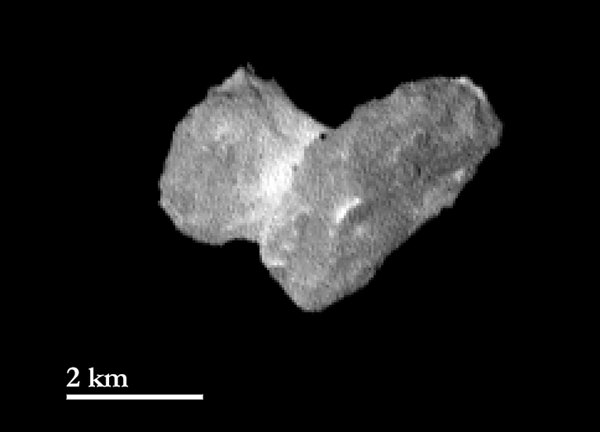The latest narrow angle camera (NAC) view from the European Space Agency’s (ESA) Rosetta mission continues to reveal more details regarding Comet 67P/Churyumov-Gerasimenko’s surface. Taken July 29 at a distance of 1,210 miles (1,950 kilometers), one pixel corresponds to about 40 yards (37 meters). Clearly visible is the bright “neck” region connecting the two lobes of the nucleus, along with several other discrete bright patches. The reason for these features is still subject to much discussion – they could be due to differences in material or grain size, or to topographical features, for example. A dark spot close to the neck is most likely a shadowing effect. A large surface depression is apparent at the very “top” of the smaller lobe in this orientation.
This time next week, Rosetta will be within just 60 miles (100km) of the comet’s nucleus, and detailed mapping can begin in order to assess candidate landing sites for the Philae lander. For regular image updates from Rosetta, visit its ESA image page and the Rosetta blog.










